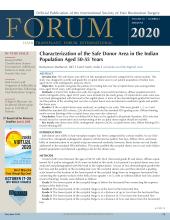Abstract
Introduction: Folliculitis after hair restoration surgery is a common complication with potentially multiple etiologies. Folliculitis usually occurs from a few days up to 6 months post surgery, and it often causes distress for the patient. However, there is still a lack of evidence regarding patient characteristics, risk factors, and prognosis of folliculitis following hair restoration surgery.
Objective: To determine the characteristics, risk factors, and prognosis of folliculitis after hair restoration surgery for androgenetic alopecia and eyebrow and beard hypotrichosis.
Methods: From January 2013 through December 2017, we conducted a retrospective study of 102 patients after follicular unit transplantation (FUT) and follicular unit excision (FUE) for scalp, eyebrow, and beard hair transplantation. A total of 50 patients with folliculitis and 52 patients without folliculitis were included in the study. The data was collected from patients' records and electronic mail. Patient characteristics, surgical technique, anesthesia, tumescent, density of donor and recipient area, and pre- and post-operative medication were compared between the two groups. The clinical investigation of infection including bacterial culture, treatment, and follow-up of hair growth were recorded.
Results: A total of 102 patients were included in the study. In the folliculitis group, 42 patients had undergone FUT, 6 FUE, and 2 a combination of FUT and FUE. In terms of severity, 30 patients (60%) had mild disease (0-10 lesions), 10 (20%) moderate (11-20 lesions), and 10 (20%) severe (more than 21 lesions). The onset of disease ranged from 2-130 days post operation. Swab cultures for aerobic bacteria were done in 10 patients and showed no growth in 4, Staphylococcus aureus in 1, Staphylococcus epidermidis in 1, Pseudomonas aeruginosa in 1, and Klebsiella pneumoniae in 1. The median age of the folliculitis group was significantly lower than the non-folliculitis group (37 years vs. 44 years). Patients in the folliculitis group were reported to have more preexisting scalp, face, and neck acne. There was no difference in surgical technique, anesthesia, tumescent, density of donor and recipient area, and pre-operative and post-operative medication between the groups. At 12-month follow-up, most patients reported satisfactory or very satisfactory results; in addition, the two hair surgeons evaluated pre-operative and post-operative photographs as satisfactory or very satisfactory.
Conclusion: Younger age and preexisting scalp, face, and neck acne may be risk factors in developing folliculitis at the recipient site after hair restoration surgery. The overall prognosis is good; most patients had excellent hair growth after one year.
- folliculitis
- infective folliculitis
- recipient site
- follicular unit transplantation (FUT)
- follicular unit excision (FUE)
- Copyright © 2020 by the International Society of Hair Restoration Surgery
This article requires a subscription to view the full text. If you have a subscription you may use the login form below to view the article.






